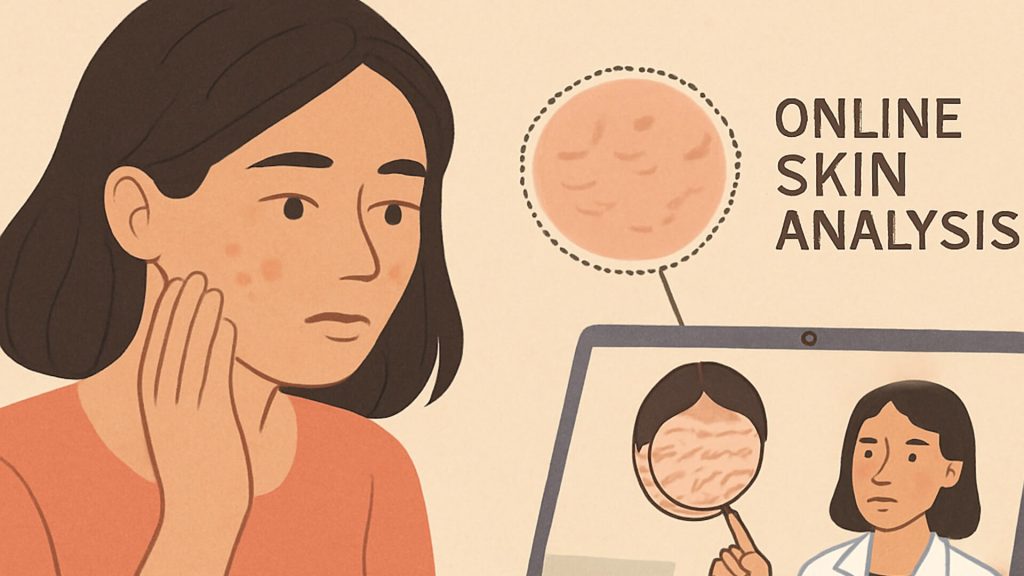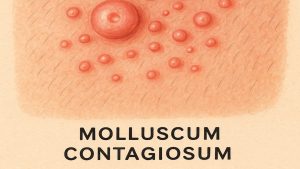- Online skin analysis enables home-based assessments conveniently
- In-person consultations offer detailed clinical evaluations
- AI tools reach up to 97% melanoma detection sensitivity
- Personalised online care reduces NHS dermatology workload
- Hybrid models combine convenience & thorough evaluation
Skin analysis is evolving as digital healthcare reshapes how people access dermatology. Both online and in-person consultations provide effective routes to identify and treat conditions like acne, pigmentation, and ageing. Each has its advantages and challenges, and a hybrid model can deliver the most balanced, personalised skincare experience.
This article compares both methods using research-based evidence, helping readers choose the best path for their needs. Services like Monderma integrate dermatologist oversight with online convenience, aligning with NHS goals to reduce waiting times and improve access to care.

Understanding Skin Analysis
Skin analysis involves examining the skin’s texture, hydration, tone, and overall health to detect conditions such as acne, dryness, rosacea, and early signs of skin cancer. Dermatologists and skincare professionals use this assessment to tailor treatments for each patient’s needs.
Early diagnosis is key. In England, more than 17,500 people are diagnosed with skin cancer every year [1]. Thorough analysis helps catch these changes early and supports preventive care. A British Journal of Dermatology study confirmed that detailed assessments improve treatment adherence and long-term results for chronic conditions such as psoriasis [2].
The Rise Of Online Skin Analysis
Convenience & Accessibility
Online skin analysis allows patients to submit photos or answer guided questionnaires remotely. It removes the need for travel, saving time and improving access for people in rural areas.
NHS England reports that teledermatology services have reduced outpatient dermatology visits by up to 30% [3]. Digital providers like Monderma enhance accessibility through free consultations reviewed by qualified prescribers within 24 hours.
Long NHS waiting lists with many patients waiting over 18 weeks for an appointment highlight the role of online services in bridging care gaps [4].
The Role Of Technology In Future Healthcare
Artificial intelligence (AI) and machine learning now support dermatologists by analysing high-resolution skin images. In trials, AI achieved a 97% sensitivity rate in melanoma detection, comparable to specialist accuracy [5]. This improves early detection and helps triage cases faster, optimising dermatology workloads.
Personalised Skincare Recommendations
Online consultations use data and imaging to produce personalised skincare plans. These may include ingredient-based product recommendations or prescription treatments tailored to skin concerns like acne or hyperpigmentation.
A 2022 Frontiers in Medicine review found digital interventions improved satisfaction and adherence for people with skin conditions [6]. Monderma’s platform follows this model, offering prescription formulations with ingredients such as tretinoin, azelaic acid, or adapalene, based on individual skin profiles.
| Feature | Online Skin Analysis | In-Person Consultation |
|---|---|---|
| Accessibility | Available from home on any device. | Requires appointment and clinic visit. |
| Speed | Results typically within 24–48 hours. | May involve longer waiting times. |
| Technology | Uses AI imaging and digital triage. | Includes direct dermoscopic evaluation. |
| Suitability | Ideal for mild or routine conditions. | Best for complex or evolving concerns. |
Table 1: Online analysis compared to in-person consultations
Problems Faced By NHS Dermatology
NHS dermatology faces ongoing challenges including limited specialist availability and long waiting lists. With only around 650 consultant dermatologists across the UK [1], demand often outpaces capacity.
Some patients wait up to two years for specialist appointments [4]. Online consultations, such as those offered by Monderma, help alleviate pressure by supporting mild to moderate skin concerns remotely, freeing specialists to manage urgent cases.

Monderma: Personalised Skincare Solutions
Monderma provides personalised, dermatologist-tested skincare for acne, ageing, pigmentation, and rosacea. After completing a free online consultation, each patient receives a tailored treatment plan created by a GPhC-registered prescriber.
Common active ingredients include:
- Tretinoin for cell renewal and collagen support.
- Azelaic acid to reduce pigmentation and inflammation.
- Adapalene to prevent clogged pores and smooth skin.
This hybrid model combines prescription precision with digital convenience, improving accessibility for those who might otherwise face long waiting times.
Making The Right Choice: Online & In-Person
Choosing between online and in-person consultations depends on the individual’s needs and the complexity of the condition:
- Online analysis suits common concerns like mild acne or skin texture issues.
- In-person reviews are necessary for changing moles, severe inflammation, or uncertain diagnoses.
A hybrid approach combining both models offers the most comprehensive care, ensuring convenient access with specialist validation when required. This balance supports both patients and healthcare systems.
The Future Of Skin Analysis
AI-driven technology and telemedicine continue to expand dermatology access. Future innovations may include real-time lesion tracking and virtual 3D skin modelling, improving diagnostic accuracy and care quality.
Platforms like Monderma demonstrate how remote dermatology can coexist with traditional care, creating a flexible and efficient patient pathway. Sharing this article can help others discover safe, accessible skincare guided by professional expertise.
Content is for informational purposes only. Monderma treatments are prescribed following consultation. Results and timeframes can vary. Use as directed by your prescriber.
Bibliography
- Cancer Research UK. Seeing Your GP About Skin Cancer. Accessed 2025.
- Nelson PA, et al. Clinicians’ Views of Supporting Lifestyle Behaviour Change in Patients with Psoriasis. Br J Dermatol. 2014;171:1116–22.
- NHS England. A Teledermatology Roadmap: Implementing Safe & Effective Teledermatology Triage Pathways. 2023.
- Skin Analytics. Manchester University NHS Foundation Trust Launches AI Dermatology. 2024.
- Advancing Skin Cancer Detection with Artificial Intelligence: UKRI Competition Results. Br J Dermatol. Supplement 1, 2025.
- Hewitt RM, et al. A Mixed Methods Systematic Review of Digital Interventions for Dermatological Conditions. Front Med. 2022.
Find your perfect skincare formula
Takes less than 2 minutes – see what your skin needs
Get Custom Formula













